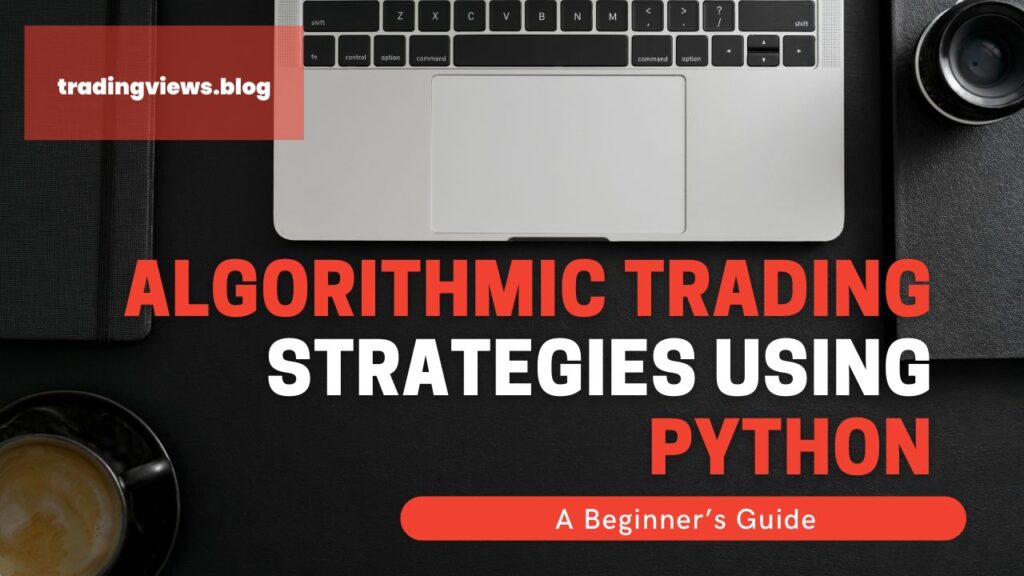Algorithmic trading has transformed financial markets which now see machines executing buy and sell orders via pre set rules and data based strategies. For those at the start of their journey in to this dynamic field we put forward Python as the best programming language out there because of its easy to use structure, flexibility, and large set of libraries for data analysis and automation. We will take you through the basics of algorithmic trading with Python which in turn will give you the base you need to confidently begin your path.
Starting Algorithmic Trading with Python: Configuring Your Environment
Before you get into coding out your first trading algorithm take time to set up a proper development environment which is tailored for financial analysis and trading automation. Python’s appeal in this area is mainly due to its easy to use syntax and also to powerful libraries such as Pandas, NumPy, Matplotlib, and Scikit-Learn which help with data manipulation, numerical computation, visualization and even machine learning. Start out by installing Python and setting up a virtual environment which will isolate your trading projects. Use Python’s package manager (pip) to install key libraries which in turn will give you the base to handle market data efficiently and to put your strategies forward.
Study of Fundamental Algorithmic Trading Strategies
Algorithm in the stock market is a term used for what is put in place which uses past and present market info to determine buy and sell times. For beginners we suggest to start out with easy approaches like the moving average crossover which is a trigger for buy or sell when short term and long term moving averages cross.
Also basic strategies which we will call out here are very useful in terms of getting to know the base of what goes into algorithmic trade and you can improve them over time by adding in more indicators or risk controls. Mastering the basic elements is the base which you build off of as you move to more complex systems which may include mean reversion, momentum based techniques, or even models which use machine learning.
Coding Up Your First Trading Algorithm in Python
Once you have your environment set up and have a grasp of the basic strategies, you may start in on your first algorithm. This process usually involves getting past price action which you can do via APIs like yfinance or direct from brokers’ sites then you apply technical indicators and put in your trade rules. For instance a easy moving average crossover can be done through the Backtrader framework which in turn simplifies the backtesting process and also allows you to see how your strategy did in the past. At this stage you are also improving your programming skills as well as testing out the strategy’s performance before you put real money at risk.
Backtesting and Performance Evaluation
A key stage in algorithmic trading is backtesting which you do by running your strategy against past market data to see how it did in terms of profit, risk, and performance. We use Python which has libraries like Backtrader and PyAlgoTrade that make this easy. Also in backtesting we look at key performance indicators which include return on investment, drawdowns, and win rates. From this analysis you are able to improve your strategy, fine tune parameters, and also find out the weak points. Through iterative backtesting you see how your algorithm does in many different market scenarios which in turn helps you to avoid large losses when you put it live.
Risk Management and Automation
Effective in risk management is of the essence in algorithmic trading. What we do beyond just presenting buy or sell signals is implement stop loss orders, position sizing rules and other safety measures which protect your capital. Python does this well via its clear risk management which is built into your trading logic. Once you have sufficiently stress tested your strategy we can head towards live trading by connecting your Python code to brokerages APIs like Alpaca, Interactive Brokers, or others. This automation has your algorithm making real time market decisions which in turn at all times is to catch the opportunities around the clock and at the same time reduce errors which come from emotion or fatigue.
Benefits of using Python in Algorithmic Trading
Python’s out does in basic coding ease. Also it has a large library of support for advanced analytics, machine learning, and data visualization which in turn empowers traders to develop complex models that adapt to market changes. Also many Indian and global brokers report to have Python based APIs which in turn enable smooth integration and automation. In comparison to other languages like C+ or Java Python has a more gentle learning curve which doesn’t sacrifice function which makes it very appealing for retail and quantitative analysts which are new to algorithmic trading.
Continuing Your Learning Journey
Algorithmic trading is a field that is always changing which in turn requires you to be constantly educated, experimenting, and adaptive. After you have a handle on the basic strategies and automation, get into more in depth topics like sentiment analysis, reinforcement learning, or portfolio optimization. Also you will find many online courses, tutorials, and communities which support your growth. Practice by developing more complex bots, interacting with real time data feeds, and including risk adjusted performance measures. With dedication and consistent effort Python will be an asset for life in your algorithmic trading career which in turn will help you turn data into doable and profitable actions.
In fact what we see is that algorithmic trading with Python is a great introduction for beginners to the world of financial markets. By the time you set up a proper development environment, learn the base of trading strategies, put in the work for backtesting and responsible automation you will see what Python has to offer in terms of building out your own trading systems. Also this approach’ what it does is present a way to improve trade execution at the same time as putting you in the driver’s seat for which you make data based, emotion free investment decisions with scalable and easy to modify strategies.
QuantConnect Community
Stack Overflow – Algorithmic Trading Python Tag
Reddit – r/algotrading
Get financial knowledge: TradingViews




Hey! This is kind of off topic but I need some help from an established blog. Is it difficult to set up your own blog? I’m not very techincal but I can figure things out pretty fast. I’m thinking about making my own but I’m not sure where to start. Do you have any tips or suggestions? Thanks
Someone essentially help to make seriously articles I would state. This is the first time I frequented your web page and thus far? I surprised with the research you made to create this particular publish amazing. Wonderful job!